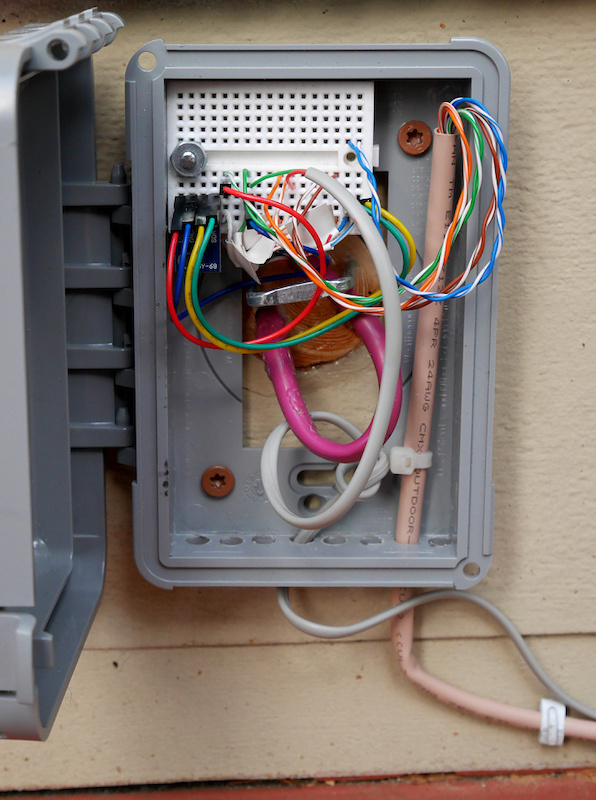-
Math Question #3
Here is the third one:

Option c) leads to the solution. The expression
f(x) + f(y) + x²y + xy²
is part of the expansion of the binomial
(x+y)³
If f(x) corresponds to the first or last term of the binomial expansion, the equation can be solved.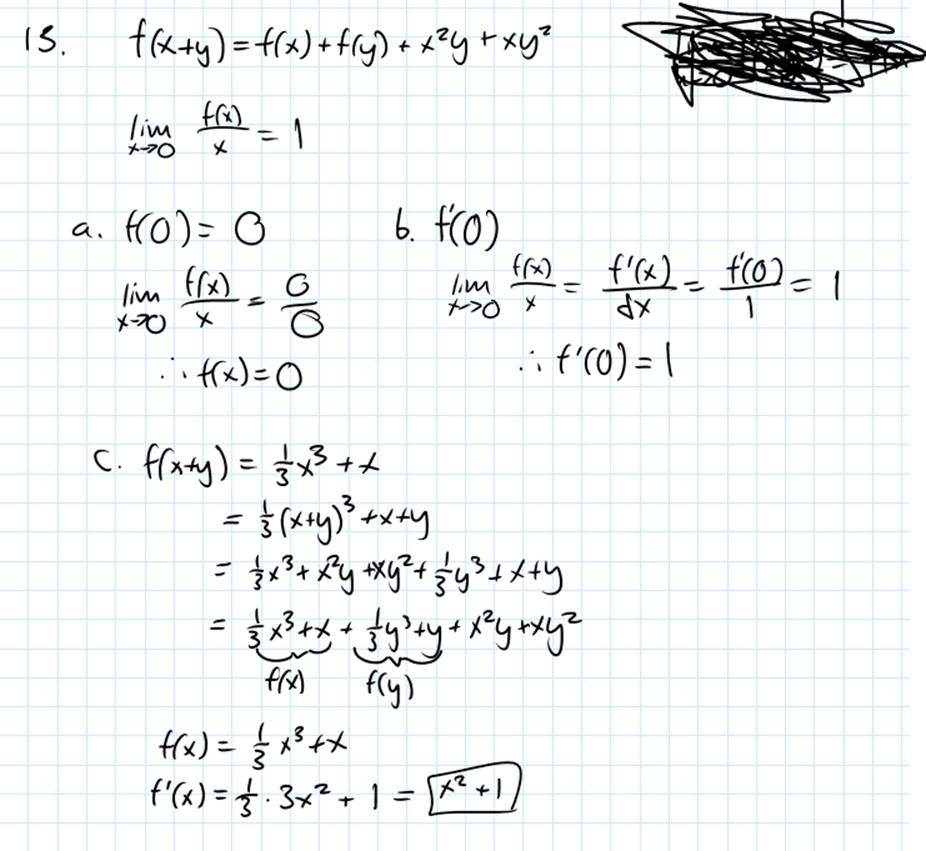
-
Math Question #2
Here is the second one:

Start by moving the x term to the right-hand side and setting x=0. This is the first equation for b.
Then with b in place, get the second equation. Isolate a and substitute 0 for x. This gets
-
Math Question #1
I've been helping out with high school math lately, and some of the questions are quite interesting.
Check this one out:
The key is to derive two equations from the derivative. With a fourth-degree polynomial, we get three points where the slope is the same, but only two of them share a common tangent line.
After that, everything falls into place.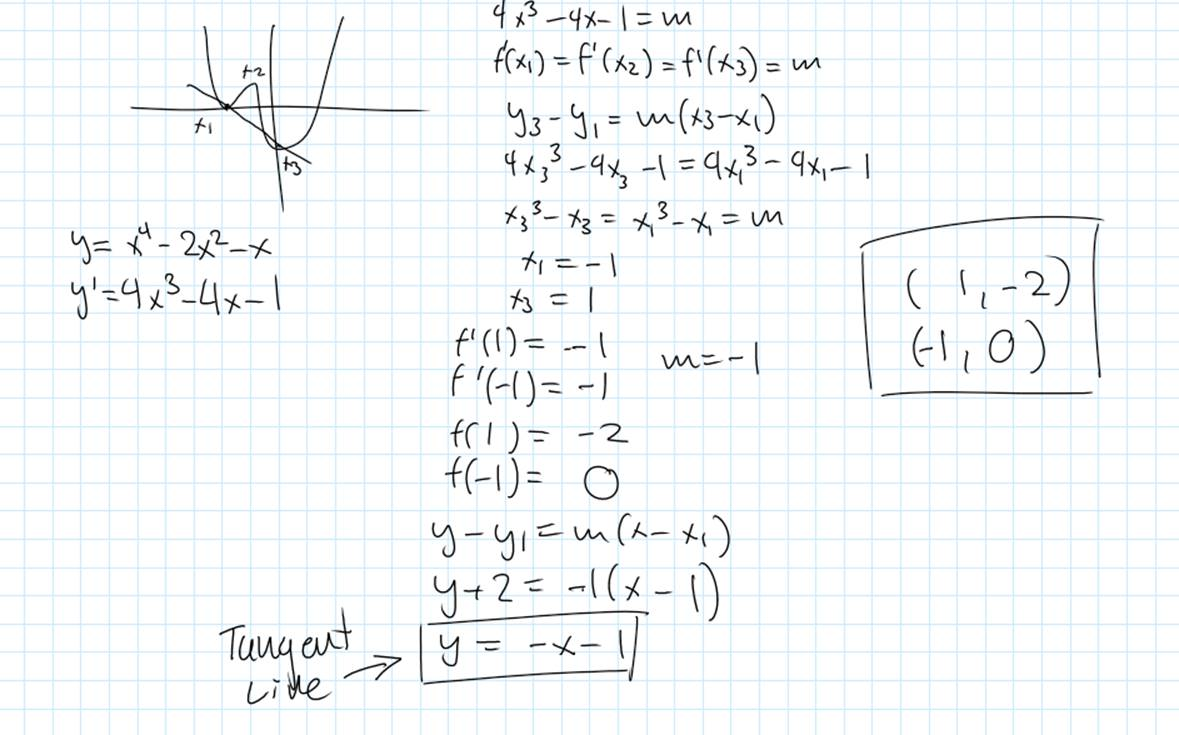
-
Using the Optrel Weldcap for Sun Eclipse 2017
August 21st 2017
Sun Eclipse over North AmericaUsing the Optrel Weldcap to watch the sun eclipse seemed like a great idea.
Worked great to begin with, but unfortunately the Weldcap failed after 10min and the auto darkening switched on and off.
Weldcrap! This was quite a unsafe experience. Best thing to do was this: -
IOT: Arduino weather station, Overview and Installation
Using a Arduino M0 Pro to power a weather station to measure wind speed/direction, humidity and temperature inside and outside, barometric pressure and rainfall, support REST API for the weather app and HTTP Server:
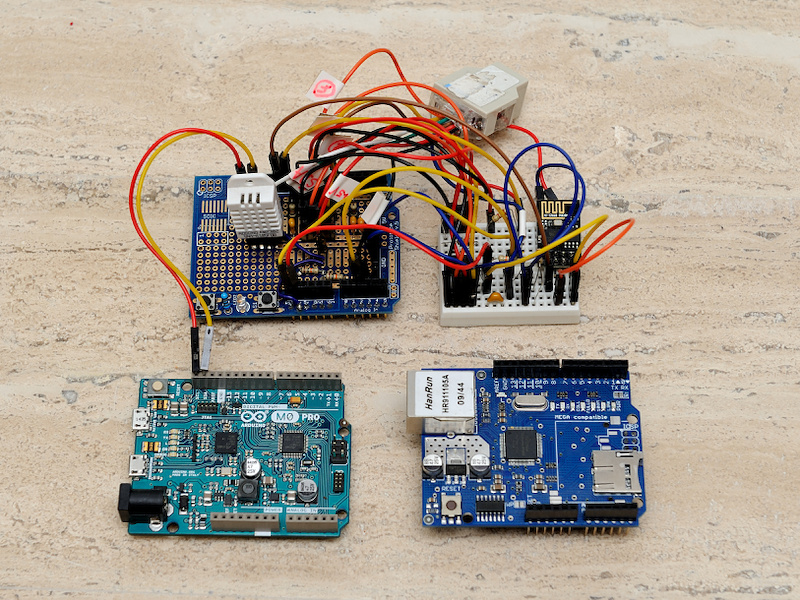
The white sensor is a DHT22 to measure the humidity and temperature inside.

The 8 pin DIP on the experimental board is a 24LC256 (32KB) to hold weather data statistics.
The wireless module is already connected and will be used later to upload data to the Azure IOT hub.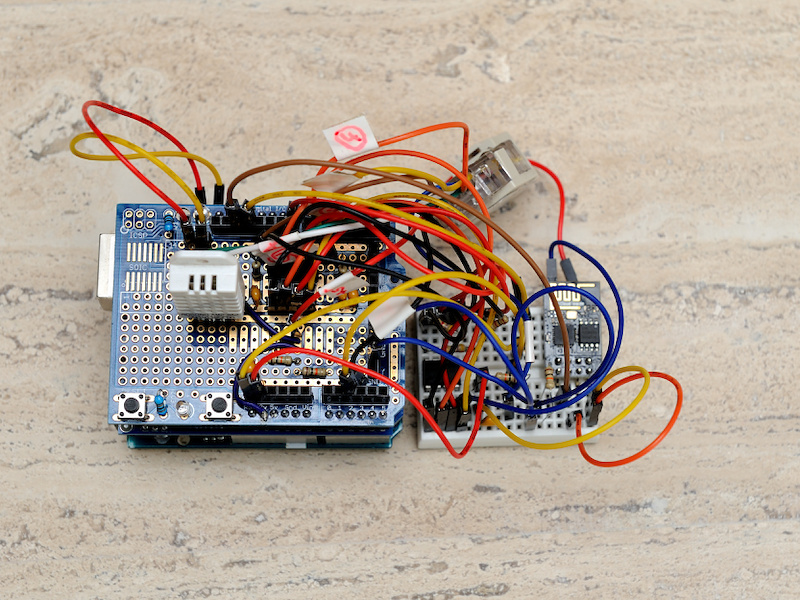
First test with the weather station to check the directional sensor and the areometer signal.
The weather station is a very popular model, but the documentation has a wrong value for the resistance for one direction.
Here is the correct list:Direction (Degrees) Resistance (Ohms) Voltage (V=5v, R=10k) 0 33k 3.84v 22.5 6.57k 1.98v 45 8.2k 2.25v 67.5 891 0.41v 90 1k 0.45v 112.5 688 0.32v 135 2.2k 0.90v 157.5 1.41k 0.62v 180 3.9k 1.40v 202.5 3.14k 1.19v 225 16k 3.08v 247.5 14.12k 2.93v 270 120k 4.62v 292.5 42.12k 4.04v 315 64.9k 4.33v 337.5 21.88k 3.43v This translates to the following analog values using the recommended 10K resistor. The analog2index function returns the index (the wind direction) of the received value from the Arduino analog input port. Since the differences between the individual values is not constant, this mapping is the most precise mapping to get the wind direction.
const int analogwerte[] = { 787, 406, 461, 84, 93, 66, 185, 127, 287, 244, 631, 601, 947, 828, 887, 703 }; const int8_t richtungen = sizeof(analogwerte) / sizeof(int); int8_t analog2index(const int analogwert) { // nächsten Wert zu analogwert in analogwerte suchen int t = 20; // Starttoleranz: +-20 int index = -2; // return -1 für Fehler for(int8_t i = 0; i < richtungen; i++) { const int d(abs(analogwert - analogwerte[i])); if(d < t) { t = d; index = i; } } return index / 2; }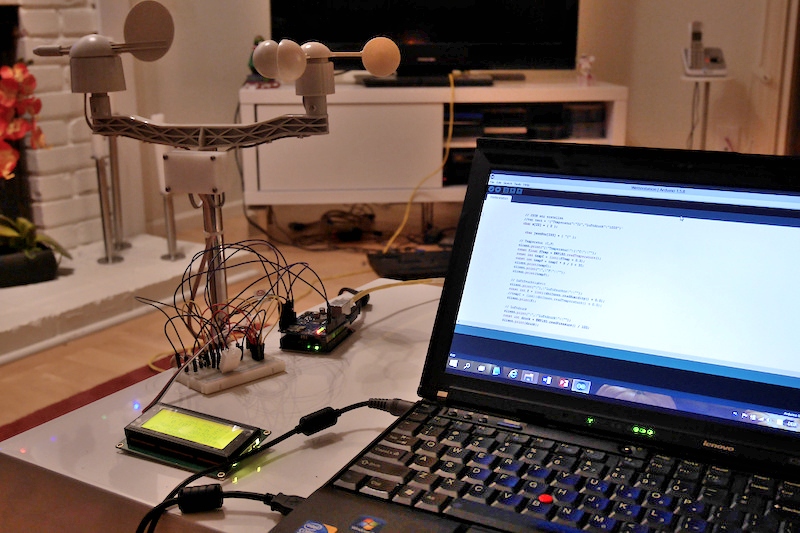
The installation:
Everything is packed and pulled up by rope up to the roof.
Bolted to the chimney.
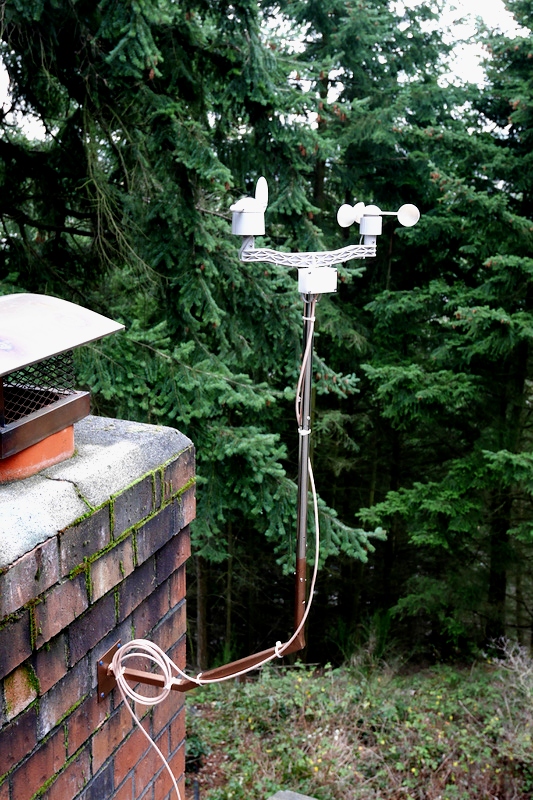
The junction box hosting the outdoor sensor for humidity and (shadow) temperature.
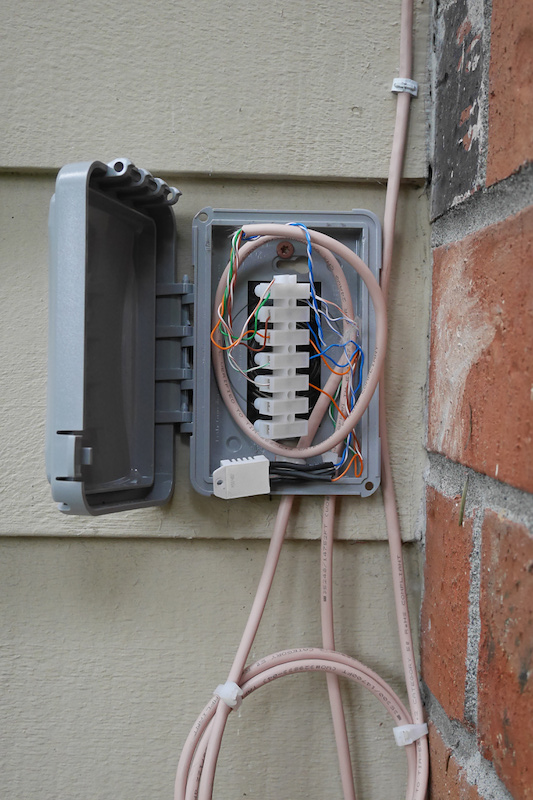
The main junction box hosting the barometric pressure sensor (BMP180) including the second outdoor temperature.
The barometric pressure sensor is located on the lower left of the experimental board.